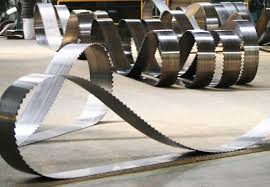Career
Choosing the Right Marine Hardware: A Comprehensive Buyer’s Guide
Equipping your powerboat with the proper marine hardware can dramatically improve its performance and safety. Quality marine equipment is crucial, from boat propellers that optimize speed and stability to bilge pumps that keep the hull dry.
The materials used in marine hardware must tolerate the salty water and humid conditions of boats. Stainless steel is a popular choice because it resists corrosion.
Propellers
Marine propellers convert the engine’s rotational motion into thrust, enabling the vessel to move forward. They are found on most boats using a stern drive, propeller shaft, Z-drive, sail drive, or hydro jet for propulsion.
A propeller’s blades can be made of stainless steel, aluminum, or brass. Stainless steel is preferred because it resists corrosion better than other metals. It can withstand the elements, such as constant exposure to saltwater and UV radiation, without rusting or cracking.
Propellers can be categorized by pitch, blade shape, and power output. A boat propeller with a low pitch is best for vessels that need to travel slowly. On the other hand, a high-pitch propeller creates more thrust and can move the boat faster.
Some propellers have cups on the leading edge to help reduce ventilation and cavitation. This feature helps prevent the formation of bubbles that cause the loss of power. It also helps the propeller pierce through thicker water.
Trim tabs
Marine hardware ensures boats’ and ships’ safety, functionality, and durability. Different types of hardware are made from various materials, each with its characteristics and advantages. Marine-grade stainless steel, for example, is a durable material that can withstand the harsh marine environment.
The best way to choose the proper marine hardware for your boat is to consider its size and intended use. For example, if you are outfitting a bass boat, it is crucial to have the right-sized trim tabs to get maximum performance. Typically, it is recommended that you have an inch of trim plane width for every foot of boat length. Then, you can choose a depth (chord) that works best for your boat’s performance goals.
For instance, a longer, narrow trim plane might deflect more deeply into the water and create speed-robbing drag. Moreover, it might also act as a rudder, which is not a good idea when maneuvering in rough seas.
Bilge pumps
An excellent marine bilge pump is one of the most critical pieces of boat hardware you can own. Water trapped inside a vessel can lead to electrical problems, corrosion, mold, and even sinking. It’s a good idea to install several bilge pumps in your vessel to prevent accumulated water from causing damage and ensure that you always have a backup if the primary pump fails.
Bilge pumps are available in two styles – centrifugal and diaphragm. Large vessels use centrifugal pumps because they need the high capacity they can offer, while smaller boats often choose diaphragm pumps because they are less expensive and require little maintenance.
Both bilge pump types come in both automatic and manual versions. Automatic pumps have a float or switch that activates them when the water level rises and turns them off when it falls, while manual pumps need you to activate them manually. The hose connecting the pump to the bilge must be smooth-bore to reduce friction that will burn up the pump’s capacity.
Marine hinges
Marine hinges are corrosion-resistant hardware that connects boats’ doors, hatches, and other movable parts. They are available in various designs, including push-button latches and compression hinges.
Hinges can be made of bronze, brass, or stainless steel. Aluminum is also used in some marine hardware because of its lightweight nature and resistance to corrosion.
When choosing metals for marine hardware, it is vital to consider the positioning of the hinge and whether it will be submerged or above water level. It determines if the hinge will need additional treatment beyond coating to be suitable for marine use.
When mounting any marine hardware, always use a high-quality marine sealant. It prevents hull intrusion that could lead to crevice corrosion and rust stains. Choosing the correct fastener for the job is also essential, as using a cheaper one may prevent the marine hardware from failing faster.
Related Posts












